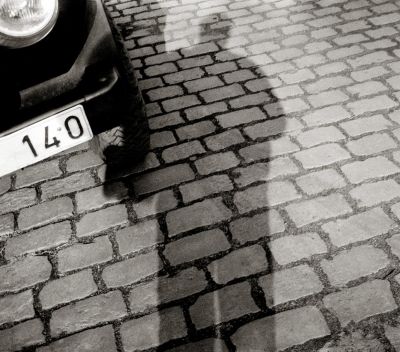Stefan Arczyński. A master of photography spanning two cultures
Mediathek Sorted



















































































His time in Germany
Stefan Arczyński was born in Essen on 31 July 1916 as the third child of Wiktor Arczyński (1879–1940) and Helena (1889–1918), née Adamska. The family hailed from what was at the time the German province of Poznań and shared the same fate as thousands of Poles who, around the turn of the 20th century, emigrated from the rural part of the region annexed by Prussia to the industrial areas of West Germany, to the Rhineland and to Westphalia to look for work.
Stefan’s father was originally from Solec Kujawski. Around 1900, he found a job in the administration department of the Krupp steelworks in Essen. His mother came from Mogilno in Greater Poland. In a photo taken in Gniezno in 1907, we can see a young woman in a fashionable white dress with a boa around her shoulders. Her pretty, round face is animated by a slight smile. Wiktor and Helena are married in 1908. Their children Tadeusz and Helena are born shortly afterwards. The Arczyńskis held firm to their Polish heritage, Polish traditions and Polish language and kept in touch with their family that had remained in the East. Wiktor was involved in various Polish organisations and after the First World War was also active in the Union of Poles in Germany.
Following the premature death of the mother, who passed away only two years after the birth of her youngest son Stefan, the father was left to bring up the children. A photo from this time, taken in Essen in 1919, shows him with his children. The family is in festive dress and gathered around a small round table. The father in a dark suit has his arm around the small, long-haired Stefan whose two older siblings are standing on the other side of the little table. They all seem relaxed as they look into the lens, the children are smiling a little. To maintain their ties with their home country, the father regularly sends the young Arczyńskis to their family in Poland during the holidays. Stefan’s brother did his A-levels in Poland although he went through the school system in Germany. He then studied at the Politechnika Gdańska (Gdansk Technical University), took on Polish citizenship and moved to Upper Silesia to work as a chemist.
Stefan Arczyński discovers his love for photography in his youth. His first photographs were taken in the 1930s and he was predominantly interested in urban architecture and sport. When he attended sporting competitions and games, his camera was always with him. In 1934, after finishing secondary school, he trained in a photographic studio in his home town of Essen, where, over the next three years, he learnt the basics of the trade. During this time, he worked as a wedding photographer taking portraits and group pictures. But because he wasn’t interested in using his camera to just capture the life stages of middle-class families, he worked on refining his own style.
At this time, photography in Germany was already very popular and as such was also well developed, although the influence of modern art movements in 1933 had been significantly restricted. However, the young Arczyński was certainly influenced by role models, such as Erich Salomon, Karl Blossfeld and August Sander. But the young man was trying to find his own language in photography by combining the aesthetic of the “new reality” (influenced by Bauhaus, by the Deutscher Werkbund (German Association of Craftsmen) and others) with a certain amount of admiration for the gigantism of many themes.
He was soon able to put his abilities to good use when he photographed the eleventh summer Olympic Games in Berlin in August 1936. One of these pictures shows Helen Stephens, who, at that time, was the fastest runner in the world. From this moment on, portraits become a favourite means of expression for him.























































































